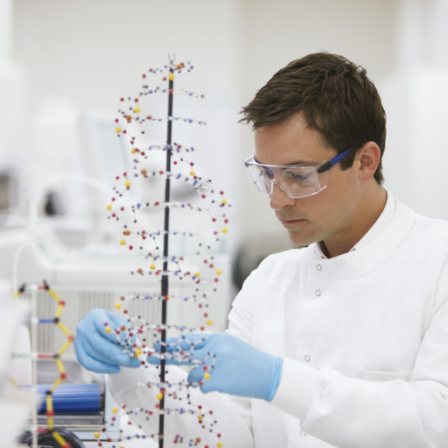Diagnosing rare diseases is often difficult, the patient’s treatment path dispersed and treatment slow, inefficient and therefore also expensive. The Hospital District of Helsinki and Uusimaa HUS and the Finnish start-up company Kirontech have recently initiated a pilot project where artificial intelligence is harnessed to identify rare diseases and the speed bumps in the their treatment process.
Despite their name, rare diseases are not quite that rare; they affect a surprisingly large number of people. Around 8,000 diseases are categorised as rare diseases, and six to eight per cent of Finns contract one during their life. Around seven per cent of HUS customers have been diagnosed with a rare disease. This means 45,000 separate patients annually. Their treatment constitutes almost 17 per cent of the annual costs accrued by HUS, as the treatment of rare-disease patients is, on the average, two and a half times more expensive than that of other patients.
The recently launched pilot project by HUS and the start-up company Kirontech aims at improving the treatment of rare diseases, with artificial intelligence analysing the extensive data related to the treatment of rare diseases. The project is funded by Sitra.
“These are often complex diseases involving many different problems. The costs also partially result from the treatment chain and service network not being optimally designed, causing the patient a terrible amount of unnecessary shuffling between facilities. Much lower costs would be incurred if we understood the route these patients take within the system better,” says Visa Honkanen, Development Manager at HUS.
Towards better treatment with a virtual unit
The majority of diagnoses made in healthcare are of relatively common diseases such as brain circulation disorders, cardiovascular diseases, mental illnesses or diabetes. In the case of rare diseases, the number of people suffering from an individual disease is very small, for which reason sensible treatment paths have not been developed for them in the healthcare system. Rare diseases include, for example, various antibody deficiencies, i.e. patients who easily contract various infections such as pneumonia.
“In the case of these kind of patients, our system is quite poor at realising that this person is not falling ill often for no particular reason, or complaining about nothing,” Honkanen says. “Another example [is] the various storage diseases where the symptoms appear very slowly due to the patient’s system lacking the ability to break up some waste molecule that is being generated. In such cases, the symptoms can also progress in a large number of different ways, and symptoms may appear from any part of the patient’s system.”
In order to improve services and treatment, HUS has established a virtual rare diseases unit jointly with the Children’s Hospital. A virtual unit means that there is no physical department to which those suffering from a rare disease would come; instead, their patient data is collected into one, virtual location. In the future, the patients could also be helped through a virtual doctor’s office.
For the joint Kirontech and HUS project that was launched in October, all data on the treatment paths of patients suffering from rare diseases available at HUS has been gathered in an anonymous form. The majority of rare diseases are genetic and often also hereditary. In the future, the purpose is also to combine genome data with the analysis. If the pilot project produces promising data, the next step would be to aim at continuous analysis of the accumulating data. The artificial intelligence could then slowly begin to give advice on what to do in different situations.
The graph analysis used in the project can be used to examine complex interactive relationships. The analysis finds all paths and links between different events, and also looks for similarities between different patients. The available data includes laboratory, report and medical record data, and various metadata on where the patient has visited. The purpose is to try to make the treatment paths of the patients more efficient based on the analysis.
Large growth prospects in Finland and abroad
The initial results of the pilot project will already be available by the end of the current year, at which stage its success can also be assessed. The possible applications of the analysis method could be extensive in both Finland and on the global market. If the analysis works for rare diseases, it will very likely also work for other patients, because there is a great deal more data for analysis from more common diseases.
“There is a strong hypothesis that [the] majority of the unnecessary costs of healthcare come from patients being subjected to procedures and contacts during the treatment path that bring no added value. Sometimes, the result of a visit or an examination is just a new visit or a new examination,” Honkanen says.
Dispersed treatment paths are not just a Finnish problem, which means that there would very probably be international demand for functional solutions based on data analysis.
“If this works in a country as sparsely populated as Finland, then it will certainly do so in a country such as Britain that has ten times the population,” according to Honkanen. “The critical mass of rare diseases will then be larger, and the path analysis easier to carry out. That is why Kirontech might have a potential export product in this.”






Recommended